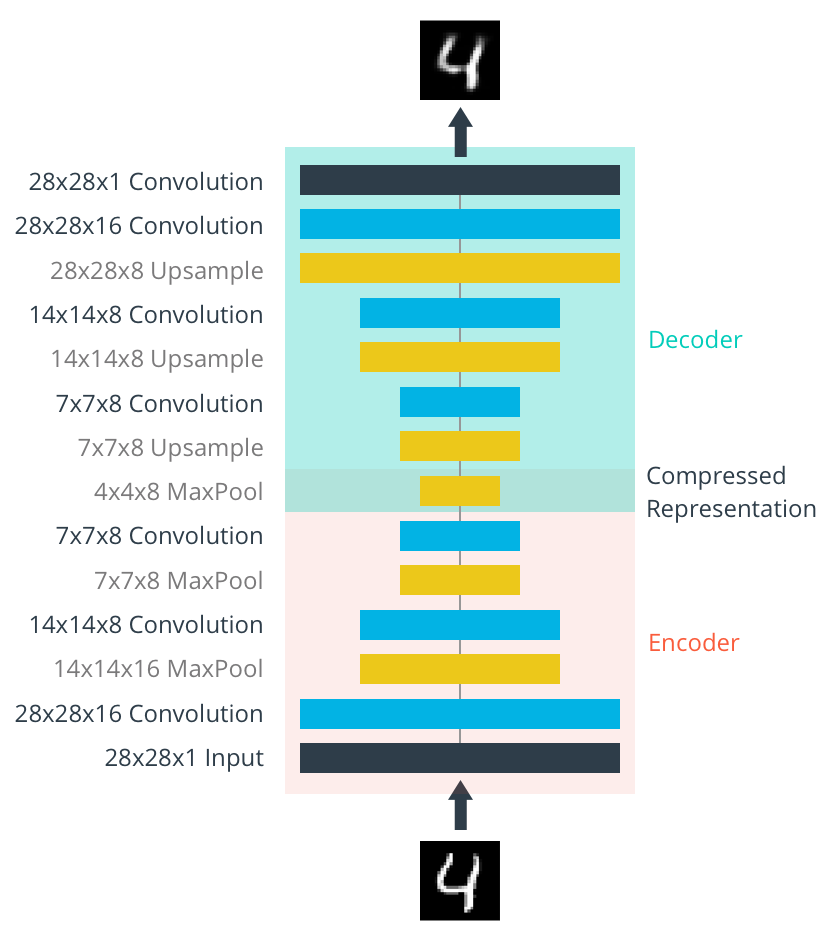Applications
Autoencoders are used for dimensionality reduction, or data compression, and image denoising. Dimensionality reduction, in turn, helps in improving runtime performance and consumes less memory. An image search can become highly efficient in low-dimension spaces.
An example of compression
The Network architecture comprises of an encoder network, which is a typical convolutional pyramid. Each convolutional layer is followed by a max-pooling layer; this reduces the dimensions of the layers.
The decoder converts the input from a sparse representation to a wide reconstructed image. A schematic of the network is shown here:

The encoder layer output image size is 4 x 4 x 8 = 128. The original image size was 28 x 28 x 1 = 784, so the compressed image vector is roughly 16% of the size of the original image.
Usually, you'll see transposed convolution layers used to increase the width and height of the layers. They work almost exactly the same as convolutional layers but in reverse. A stride...







































































